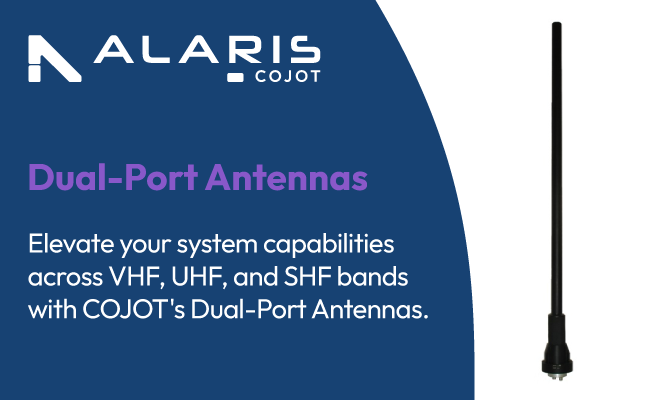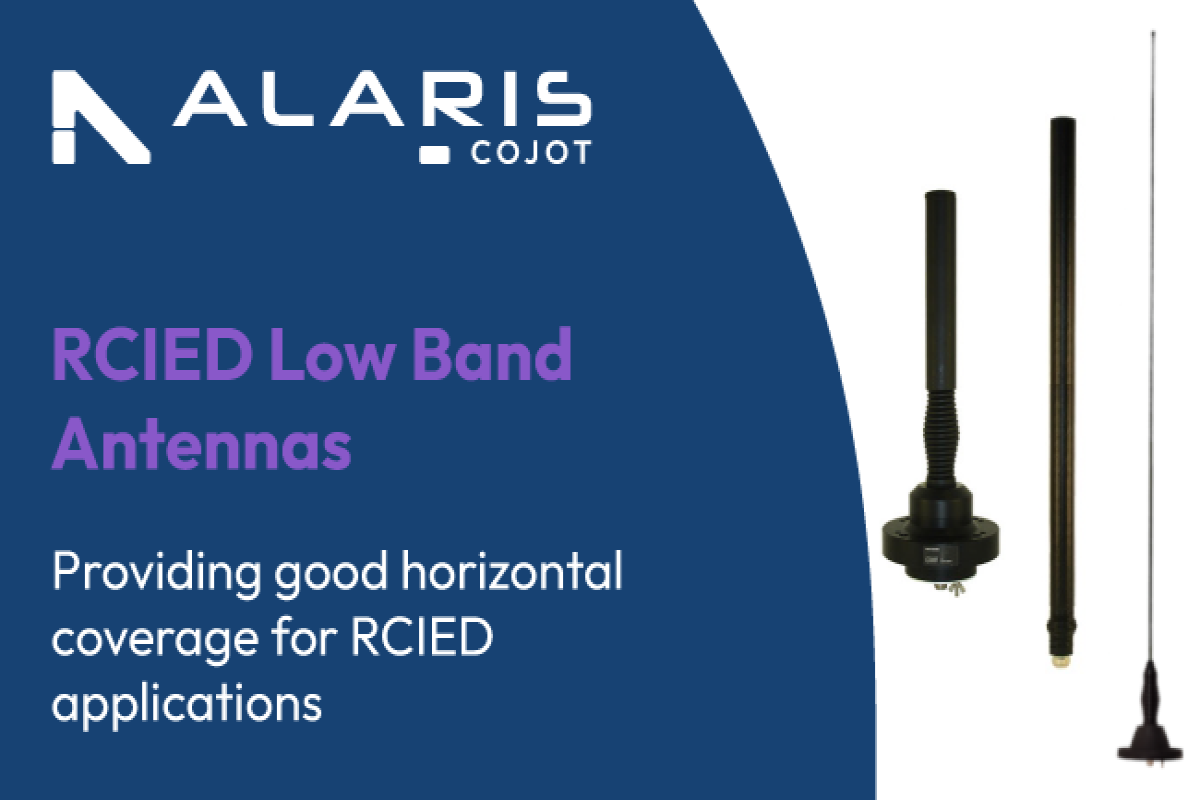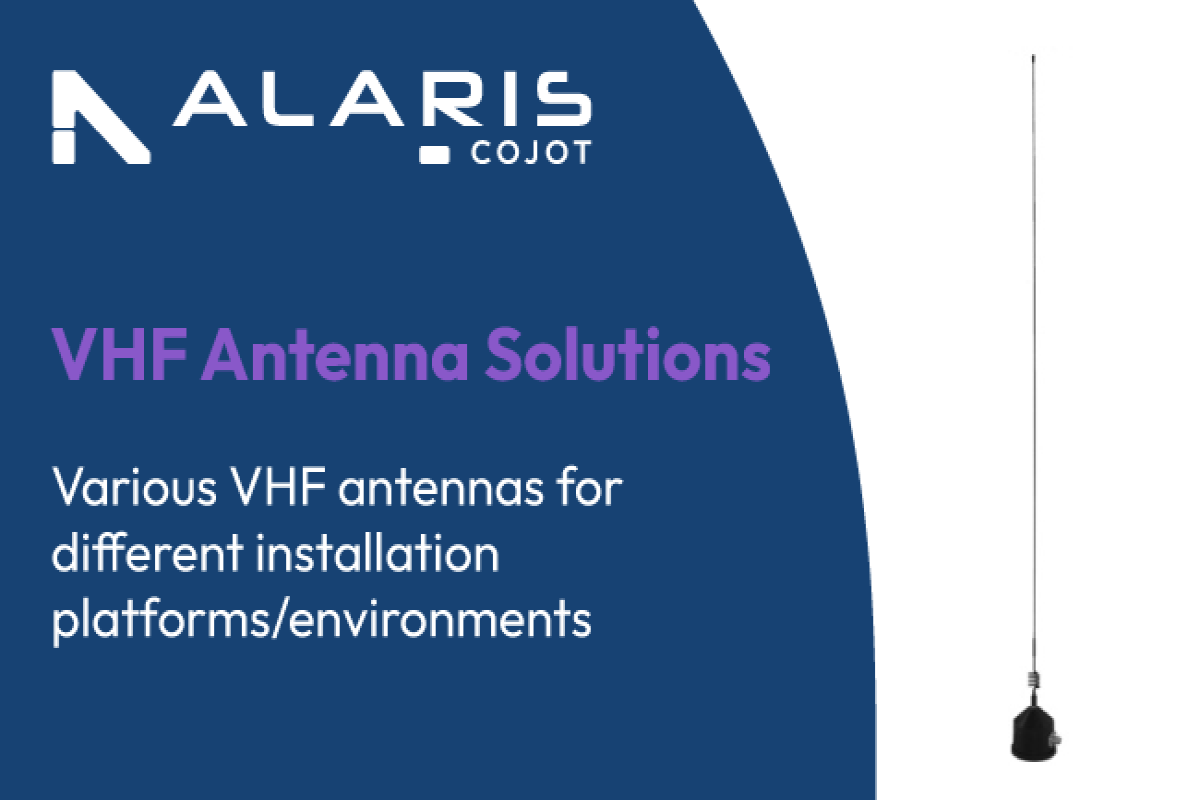COJOT's Dual-Port Antennas: Practical Solutions for challenging installation situations

In the domain of tactical communication and ECM applications, COJOT offers a series of dual-port antennas designed for robust performance in challenging operational environments. Let's delve into the practical features and applications of these antennas:
WBC2600M and WBC2800M - Practicality in High-Power Applications
The WBC2600M is a robust solution covering VHF, UHF, and SHF bands, suitable for high-power ECM and tactical communication scenarios from 20-6000MHz. At which the WBC2800M caters to high-power ECM and tactical communication with an extended frequency range from 20 to 7500MHz.
Key features include:
- Dual-Port Design: Integrating two antennas for a balanced visual profile and broad frequency range.
- Optimised Coverage: The high-band, ground plane-independent antenna ensures effective coverage.
- Power Reliability: With a power rating exceeding 300 W, it delivers solid performance in demanding conditions.
WBC2600B – Practical Solutions with Dual-Port Design
The WBC2600B is tailored for semi-mobile and fixed-site systems in ECM, communication, and monitoring applications. Core features include:
- Installation Flexibility: Multiple installation options, including standalone, on a mast, container, or shelter.
- Frequency coverage: A dual-port design providing an extended frequency range with a low visual profile.
- Power Output: A high power rating of over 300 W ensures reliable performance.
WBC3924 - Dual-Port Advantage in VHF and UHF Bands
The WBC3924 is designed for mobile C3I applications, excelling where multiple antennas or co-location challenges arise. Key features include:
- Simple Installation: Engineered for easy installation on vehicles or shelters.
- Frequency coverage: A dual-port design ideal for the 30 - 108 and 225 - 512 MHz frequency ranges.
- Effective Coverage: A high-band, ground plane-independent antenna positioned at the top ensures optimal coverage.
Dual-Port Antennas
Dual-port antennas incorporate two antennas in the same housing, operating by sending and receiving radio frequency signals in two distinct frequency ranges. This technology allows for individual or simultaneous use, providing a versatile solution in tactical communication and ECM applications. Originally employed to optimise space constraints and increase deployment capacity without added structural loads, dual-port antennas represent a practical approach in various fields of applications.





